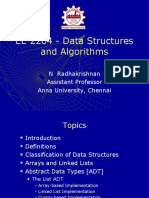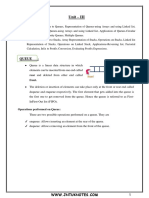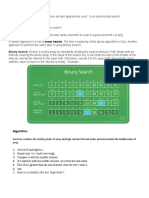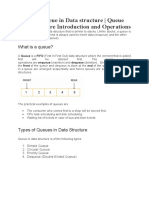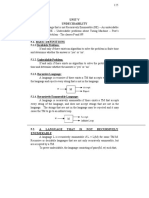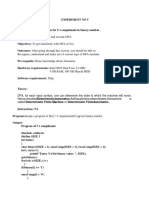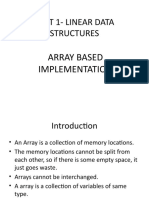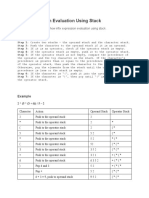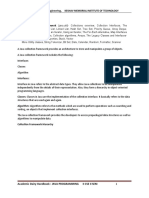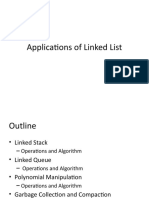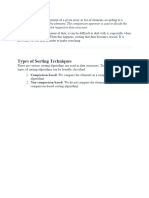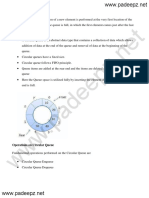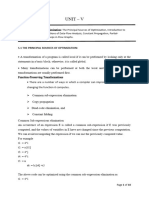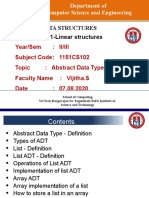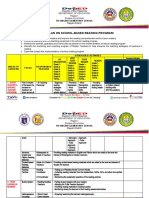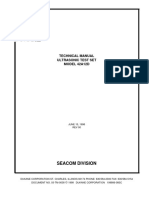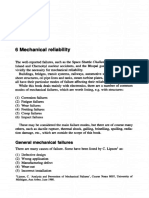0% found this document useful (0 votes)
548 views13 pagesStack and Queue
This document discusses stacks and queues as data structures. It provides 3 key points:
1. A stack is a linear data structure that follows LIFO (last in, first out) ordering. Data is inserted using push and removed using pop.
2. A queue is also a linear data structure, but follows FIFO (first in, first out) ordering. Data is inserted at the rear and removed from the front.
3. A circular queue is similar to a linear queue, but the last position is connected to the first position to form a circle. This allows for continuous insertion and removal of elements.
Uploaded by
Anil PrajapatiCopyright
© © All Rights Reserved
We take content rights seriously. If you suspect this is your content, claim it here.
Available Formats
Download as PPT, PDF, TXT or read online on Scribd
0% found this document useful (0 votes)
548 views13 pagesStack and Queue
This document discusses stacks and queues as data structures. It provides 3 key points:
1. A stack is a linear data structure that follows LIFO (last in, first out) ordering. Data is inserted using push and removed using pop.
2. A queue is also a linear data structure, but follows FIFO (first in, first out) ordering. Data is inserted at the rear and removed from the front.
3. A circular queue is similar to a linear queue, but the last position is connected to the first position to form a circle. This allows for continuous insertion and removal of elements.
Uploaded by
Anil PrajapatiCopyright
© © All Rights Reserved
We take content rights seriously. If you suspect this is your content, claim it here.
Available Formats
Download as PPT, PDF, TXT or read online on Scribd
/ 13

